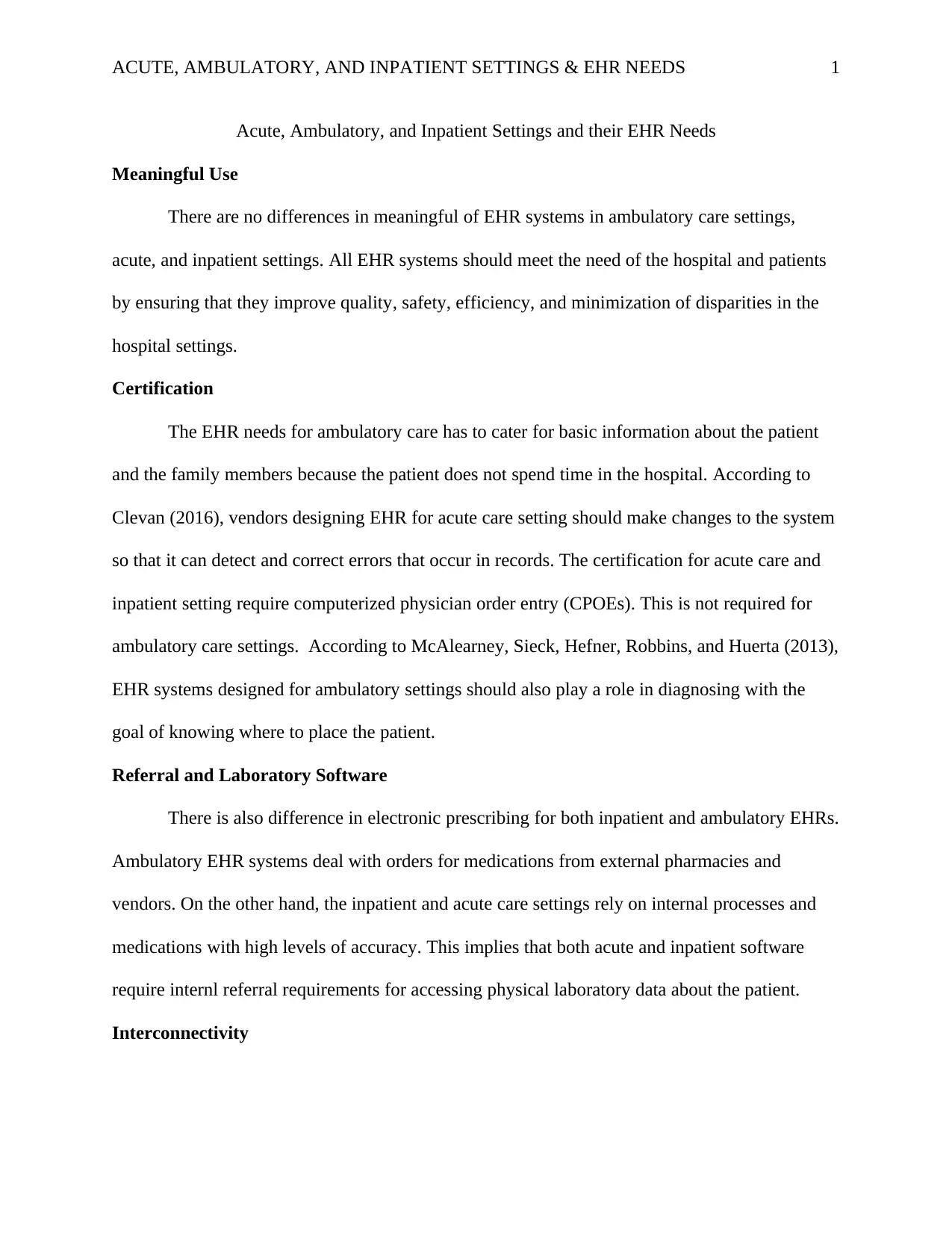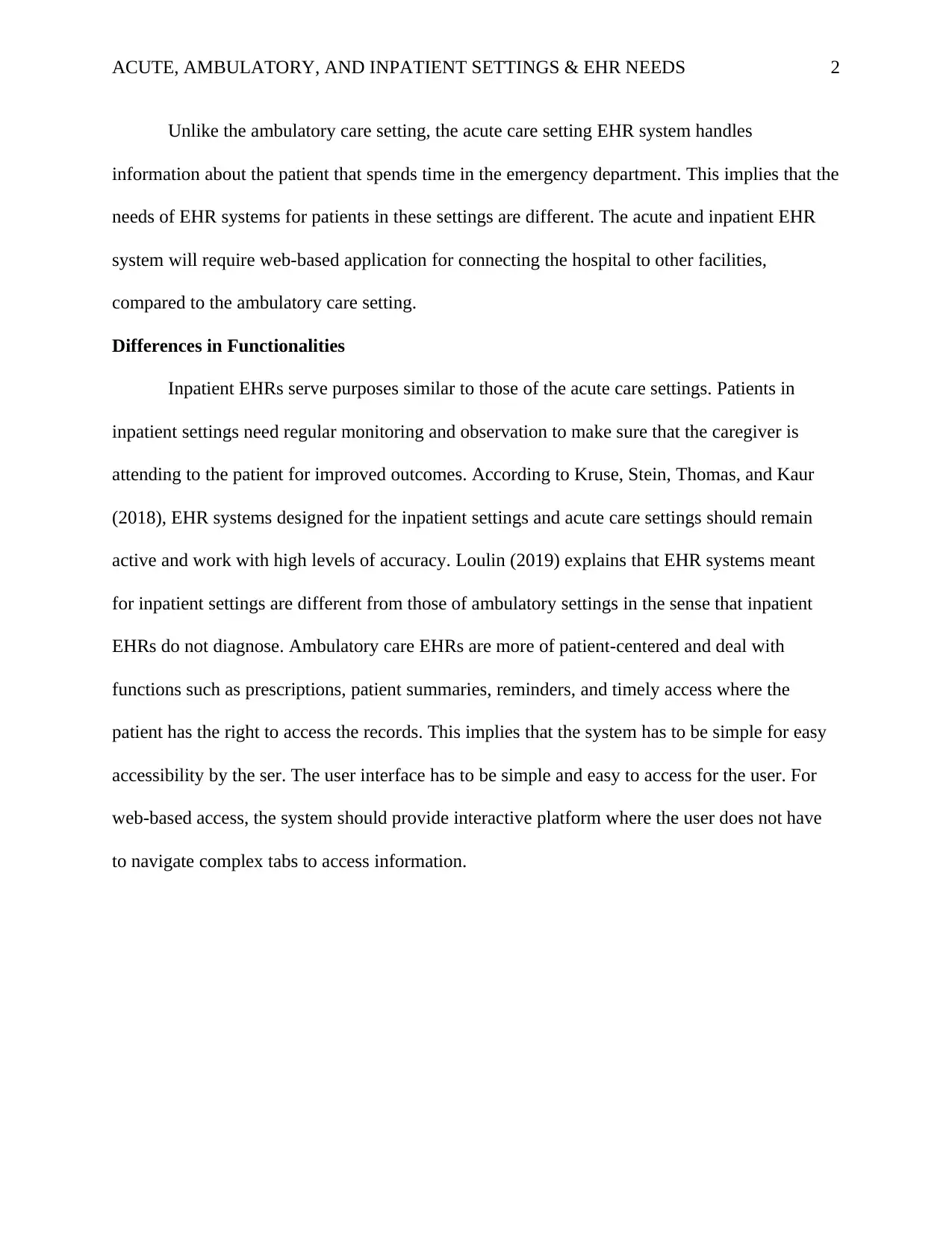Comparing EHR Needs Across Healthcare Settings: A Detailed Analysis
VerifiedAdded on 2023/01/23
|4
|764
|68
Report
AI Summary
This report analyzes the Electronic Health Record (EHR) needs across acute, ambulatory, and inpatient healthcare settings. It highlights the differences in meaningful use, certification requirements, and functionalities of EHR systems in these settings. The report discusses the importance of basic patient information in ambulatory care, the need for computerized physician order entry (CPOEs) in acute and inpatient settings, and the role of electronic prescribing and referral software. It emphasizes the importance of interconnectivity, especially for acute care settings, and contrasts the patient-centered approach of ambulatory EHRs with the monitoring and observation needs of inpatient settings. The report also references several studies and articles to support its findings, providing a comprehensive overview of EHR systems and their impact on patient care and healthcare efficiency.
1 out of 4











![[object Object]](/_next/static/media/star-bottom.7253800d.svg)